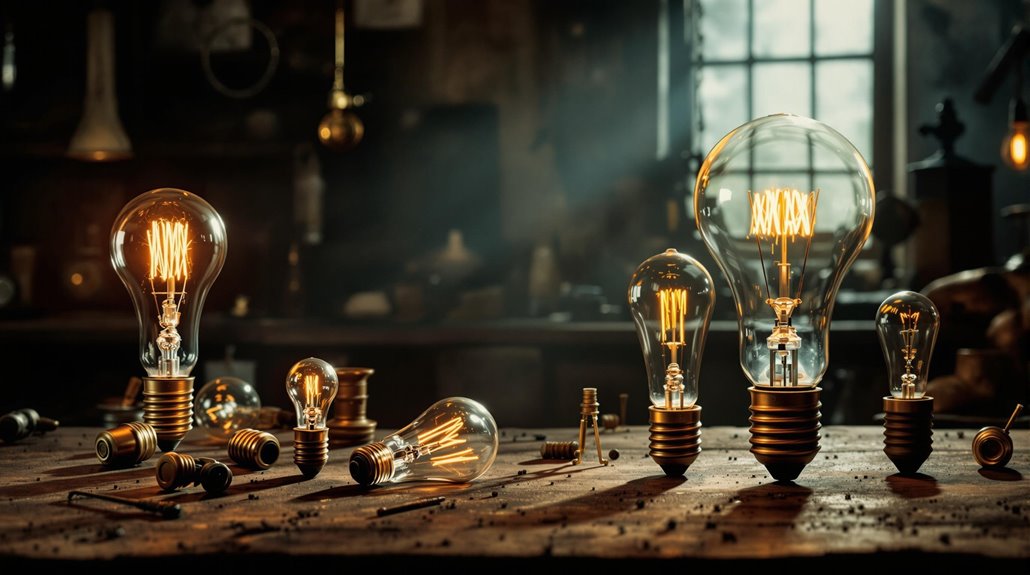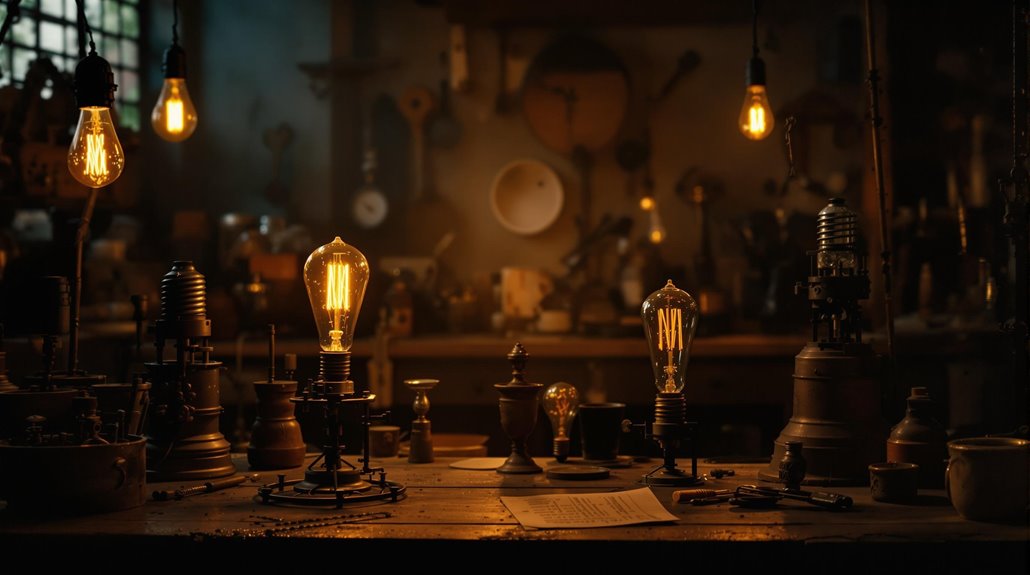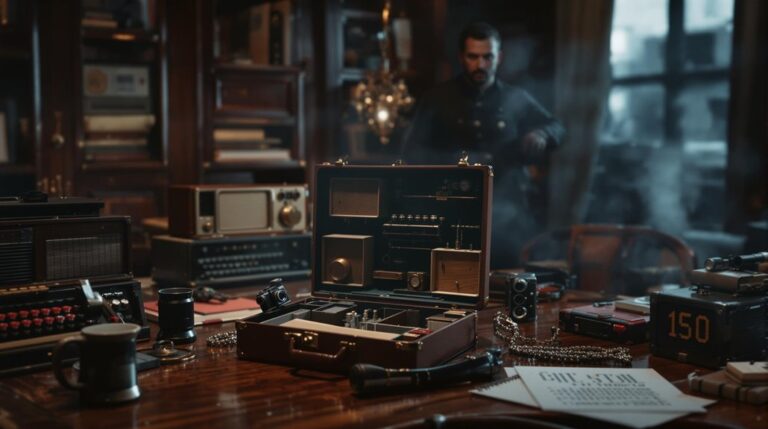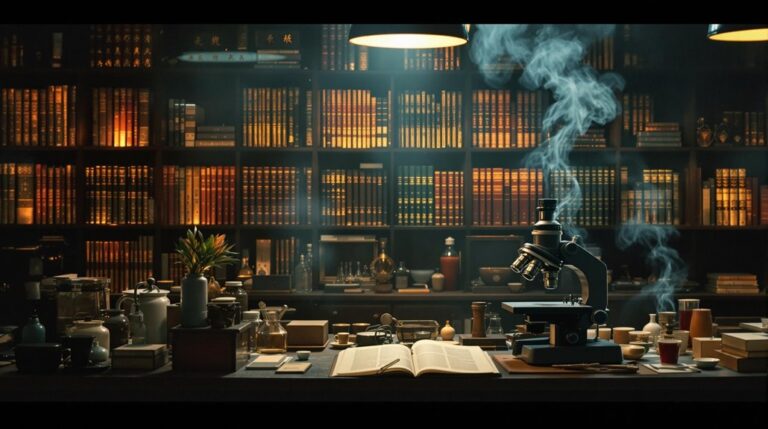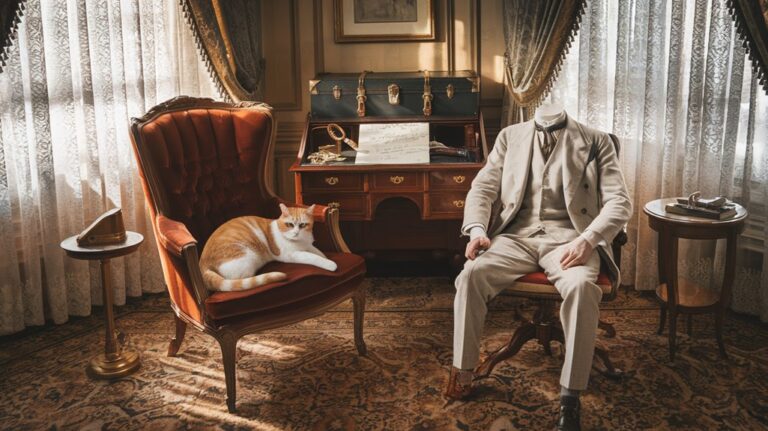Who Truly Invented the Light Bulb? The Overlooked Pioneers
When you flip a light switch today, you're participating in a legacy that began long before Thomas Edison's famous breakthrough in 1879. You've probably heard the standard story: Edison invented the light bulb and changed the world. But that's not the complete picture. A remarkable chain of inventors, from Humphry Davy's early arc lamp to Joseph Swan's groundbreaking carbon filament, laid the foundation for Edison's success. Their overlooked contributions reveal a fascinating tale of global innovation and fierce competition.
The Race for Electric Light: Early Experiments and Breakthroughs
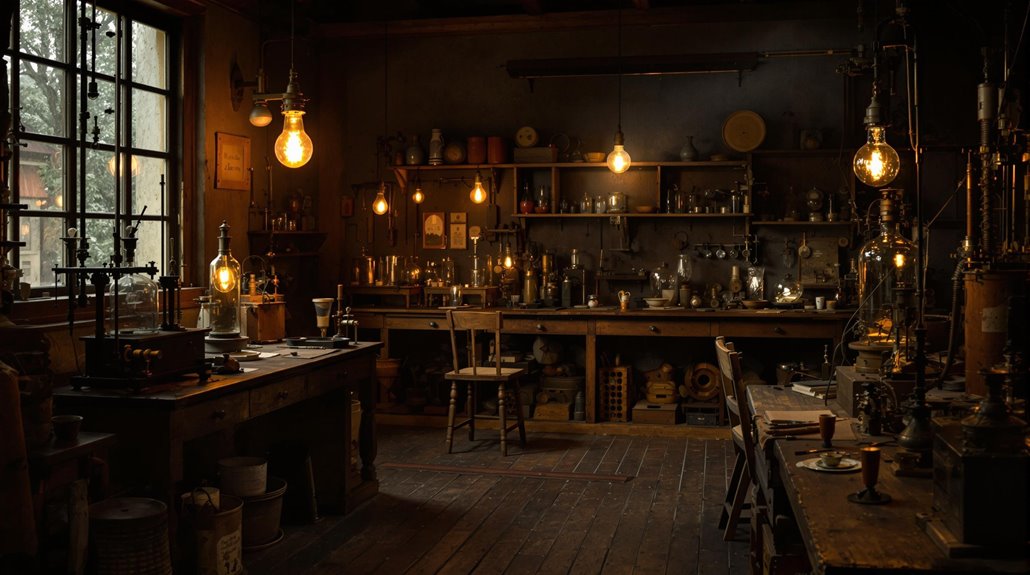
While many associate the light bulb solely with Thomas Edison, the journey toward electric lighting began decades earlier with numerous inventors and scientists making significant breakthroughs.
In 1802, you'd have witnessed Humphry Davy's groundbreaking demonstration of the first arc lamp, using charcoal electrodes powered by a voltaic pile.
Though impractical due to expensive batteries, this innovation sparked future developments. By 1878, Edison began his intensive research and eventually created a reliable carbon filament.
In 1845, J.W. Starr created a revolutionary design featuring a carbon rod in vacuum that was demonstrated in London, though it ultimately failed commercially due to rapid blackening.
Joseph Swan's Legacy: The British Innovation Story
Although often overshadowed by Edison in popular history, Joseph Swan's pioneering work in electric lighting transformed Britain's technological landscape during the Victorian era.
From his apprenticeship as a pharmacist, you can trace Swan's inventions through a remarkable journey of innovation, culminating in his 1860 patent for the carbon filament lamp and his groundbreaking demonstration in 1879. The Savoy Theatre became the world's first public building to be entirely illuminated by his electric lights.
You'll find Swan's impact extends far beyond lighting. His contributions to British photography, including the carbon printing process and bromide paper, revolutionized the field.
He lit up the world's first home with electric bulbs in Gateshead and illuminated Newcastle's Lit & Phil Library, proving the practicality of his designs. The Edison & Swan United Electric Light Company formed in 1883 to resolve patent disputes between the two inventors.
His achievements earned him knighthood in 1904 and prestigious recognition from the Royal Society, cementing his place as one of Britain's most influential inventors.
Edison's Path to Success: Beyond the Popular Narrative
Despite his legendary status as the light bulb's inventor, Thomas Edison's path to success reveals a more nuanced story of systematic innovation and business acumen.
His innovation process at Menlo Park combined methodical experimentation with strategic business decisions, demonstrating that breakthrough technologies often emerge from refinement rather than pure invention. The success of his early work with the phonograph in 1877 helped establish his reputation as a pioneering inventor.
Edison's teamwork approach and relentless experimentation yielded several key insights that would transform electrical lighting. After extensive testing, his team discovered that carbonized bamboo filaments provided exceptional durability in their bulbs.
- You can't succeed alone – Edison assembled skilled scientists and technicians
- Innovation requires persistence – over 3,000 experiments led to success
- Business strategy matters – acquiring patents and forming strategic partnerships
- Improvement beats invention – enhancing existing technologies proved more effective
Through his unique blend of scientific method and entrepreneurial spirit, Edison created not just a better light bulb, but an entire electrical infrastructure that would power the modern world.
The Global Network of Inventors: Forgotten Contributors
The story of the light bulb extends far beyond Edison's Menlo Park laboratory, encompassing a vast network of inventors across Europe and North America who made significant breakthroughs.
You'll find remarkable contributions from international inventors like Alessandro Volta, whose voltaic pile in 1799 first demonstrated electric light from copper wire, and Humphry Davy, who created the electric arc lamp in 1802.
Joseph Swan's developments in Britain led to a working carbonized paper filament bulb by 1860, while Canadian inventors Woodward and Evans filed their own electric lamp patent in 1874.
This global collaboration ultimately shaped the modern light bulb, culminating in the formation of the Edison-Swan United Electric Light Company in 1883.
The eventual merger of competing interests, including Thomson-Houston Electric Company with Edison's enterprise, created what you now know as General Electric.
Edison's success came from his ability to improve upon existing designs, as he filed over 30 patents related to various aspects of the light bulb's development.
The Evolution of the Light Bulb: Key Technical Milestones

Since its inception in the early 1800s, lighting technology has undergone remarkable transformations through four distinct phases: incandescent, vacuum-enhanced, fluorescent, and LED innovations.
Smart light bulbs with IoT integration are revolutionizing how we control and customize our lighting environments.
You'll find that each phase brought significant improvements in bulb efficiency and filament materials. From Davy's arc lamp to Edison's bamboo filaments, inventors continuously refined their designs.
The introduction of tungsten filaments in 1904, followed by Langmuir's gas-filling technique in 1913, doubled the efficiency of early bulbs. The emergence of gas lighting in the 19th century marked a crucial transition from candles and oil lamps, offering brighter illumination at lower costs.
Key technological breakthroughs that shaped modern lighting:
- Shift from platinum to carbonized materials to tungsten filaments
- Development of vacuum technology and inert gas filling methods
- Introduction of mercury vapor and fluorescent coating techniques
- Evolution from simple electroluminescence to high-brightness LED technology
These advancements transformed lighting from a luxury into an essential part of modern life.

